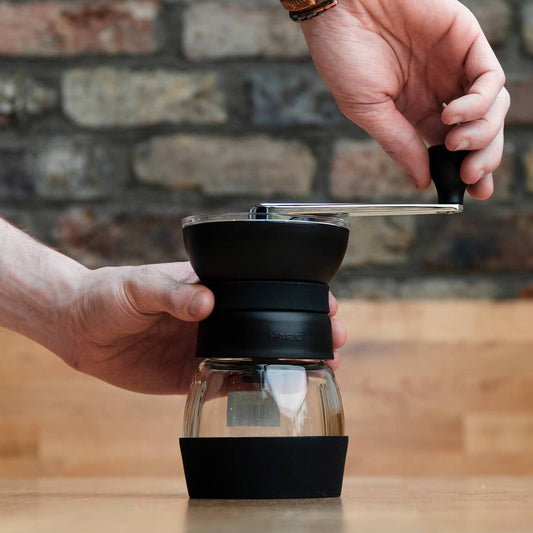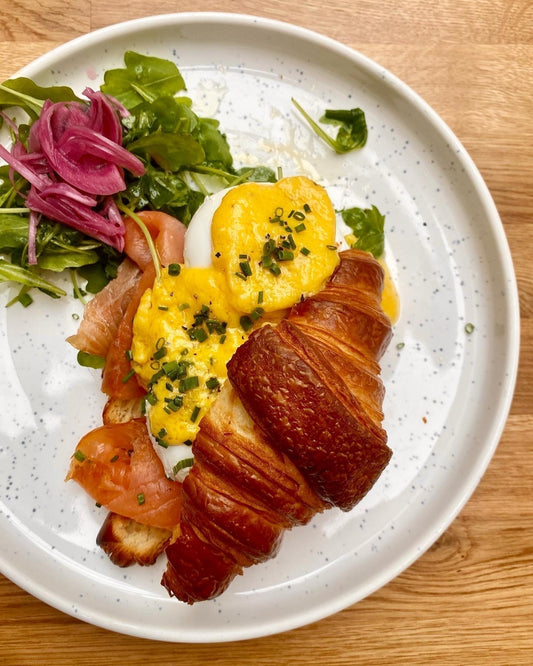Strong, sweet, and steeped in tradition. Cuban coffee is more than a morning pick-me-up. It's a cultural icon, a daily ritual, and a symbol of togetherness passed through generations.
Known for its bold flavour and signature espuma (sweet foam), this intense, concentrated brew is often shared in small but meaningful servings among friends, family, and neighbours.
In this guide, we’ll explore the history of Cuban coffee, its role in daily life, and how you can confidently prepare it at home.
A brief history of Cuban coffee: from hillside to heritage
Cuban coffee dates back to 1748, when Spanish colonists introduced coffee cultivation to the island. But its commercial roots took hold after 1791, when French settlers fleeing the Haitian Revolution arrived with agricultural expertise, transforming the mountainous eastern regions, especially around Santiago de Cuba and the Sierra Maestra, into productive coffee-growing areas.
By the mid-1800s, Cuba had become one of the leading coffee exporters in the Caribbean. Cuban beans were praised across Europe, and plantations such as La Isabelica—now a UNESCO World Heritage Site—became lasting symbols of the island’s coffee legacy.
However, by the mid-20th century, the global market shifted. Cuba’s 1959 revolution and subsequent embargoes led to decreased exports, making domestic consumption the focus. Cuban coffee shifted from global commerce to an everyday necessity, no longer just a commodity but a household staple.
To this day, even amid political complexities and economic challenges, Cuba continues to produce coffee—particularly robusta and arabica varieties in eco-friendly, small-scale farms—keeping alive a tradition that’s as much about community as it is about caffeine.
Coffee in Cuban culture
What sets Cuban coffee apart is not just its flavour—it’s the ritual that surrounds it. In Cuban culture, coffee is everywhere: at home, at work, on the sidewalk, after a meal, or before a chat. It’s a conversation-starter, a gesture of kindness, a break in the day to reconnect.
Discover the traditional versions:
-
Cafecito
This is the iconic Cuban espresso: dark, strong, and sweet. Brewed in a moka pot, it gets its signature taste from sugar that’s whipped into the first few drops of coffee, forming a light, creamy layer of foam known as espuma. It's tiny, but potent—meant to be sipped slowly and with reverence.

-
Colada
Think of the colada as cafecito for a crowd. Typically served in a styrofoam cup with several small plastic thimbles, it’s passed around among coworkers, friends, or family—a social glue wrapped in caffeine. The colada isn’t just a drink; it’s a declaration of community.
-
Cortadito
This one softens the edges. A cortadito blends cafecito with a splash of steamed milk, balancing intensity with smoothness. It’s popular in cafés and homes alike, serving as a mid-morning indulgence or an afternoon pick-me-up.
The art of brewing Cuban coffee at home
Replicating the taste and magic of Cuban coffee in your kitchen is not only possible—it’s deeply rewarding. The process is simple, yet each step has meaning. Think of it less like making coffee, and more like performing a morning ritual.
To brew like a Cuban master you will need:
- Finely ground dark roast espresso beans
- A moka pot, also called a stovetop espresso maker
- Sugar, preferably brow sugar or raw demerara
- A metal spoon and a sturdy mug
- Small espresso cups—because presentation matters!
Step-by-step:
- Fill the bottom of your moka pot with water to just below the pressure release valve.
- Add your ground coffee to the filter basket. Don’t tamp it down—just level it off gently.
- Begin heating the moka pot on medium heat, meanwhile, place 2 teaspoons of sugar per serving in a metal cup or bowl.
- As soon as the first few drops of coffee emerge from the moka pot, remove it from the heat and spoon those drops into your sugar.
- Whip the sugar and coffee vigorously with your spoon until you form a thick, caramel-colored foam—this is your precious espuma.
- Return the moka pot to heat and let the full brew complete.
- Pour the finished coffee over the espuma, slowly and evenly. Stir once, pour into small cups, and serve.
The result? A velvety, intense espresso-like coffee with a fine, sweet layer of foam that floats on top. Delicious—and culturally spot-on.
Don’t let your coffee betray you: avoiding common mistakes
- Boil the moka pot on high heat. High heat burns the coffee, ruining flavour. Use medium heat and listen—when it starts gurgling, you’re nearly there.
- Forgetting the espuma. Skipping this step means losing the hallmark Cuban foam and sweetness. Watch the brew closely and whip the sugar the moment those first drops appear.
- Over-packing the filter basket can block smooth extraction. Fill and level—no tamping needed.
- Using the wrong grind. Why it’s bad: Too coarse = weak coffee. Too fine = bitter sludge. Aim for a texture just finer than table salt.
Cuban coffee’s global reach
Cuban coffee culture didn’t stay on the island. Through migration—especially to Miami, Tampa, and New Jersey—Cuban communities brought the cafecito to American shores.
Today, walk through Little Havana in Miami and you'll spot walk-up windows, or ventanitas (little coffee windows), where coladas are served. Cuban coffee has become part of the broader Caribbean and Latin American diaspora, adapting slightly, but always staying true to its strong, sweet roots.
Even outside of Cuban-American hubs, this style is winning hearts. It’s not surprising: it’s delicious, easy to prepare, and wrapped in cultural warmth.
What this tiny cup really means
Cuban coffee is everything coffee should be: rich, welcoming, and unforgettable. It’s strong enough to keep pace with Havana’s heartbeat, sweet enough to soften conversations, and small enough to be finished before life pulls you away.
To sip it is to taste a story. And now, the story can live in your kitchen.
¡Salud!







